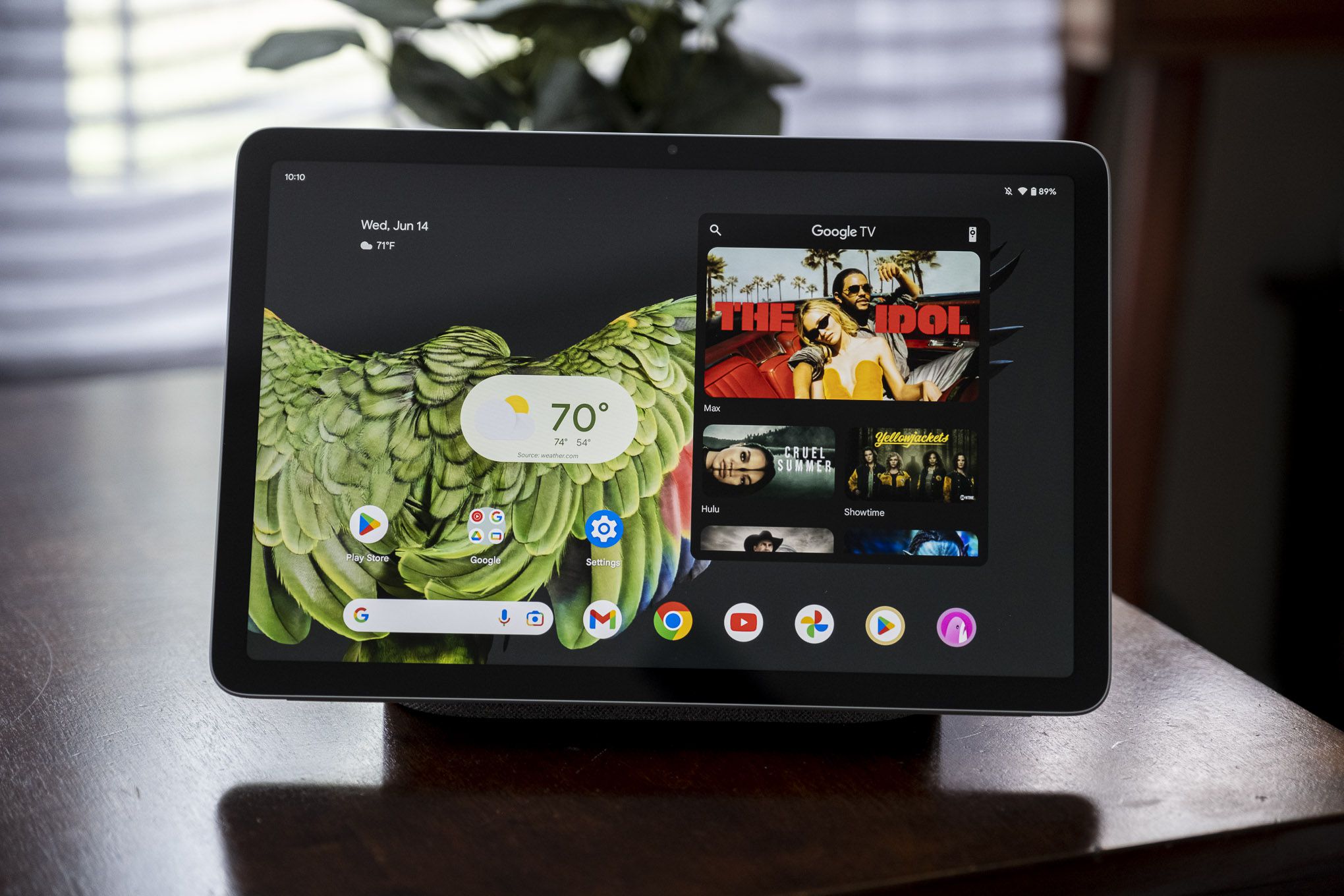
Specifications and Design
The Google Pixel Tablet, released in 2023, brings a fresh addition to the Android tablet market. Here’s a quick look at its key specifications and design features:
- Display: 10.95-inch LCD with a resolution of 2560 x 1600 pixels and 500 nits of brightness.
- Processor: Powered by Google's Tensor G2 SoC, the same processor found in the Pixel 7 line and Pixel Fold.
- Memory and Storage: Base model includes 8GB of RAM and 128GB of internal storage, with an option to upgrade to 256GB for an additional $100.
- Colors: Available in Porcelain, Hazel, and Rose.
The Pixel Tablet’s contoured design offers a comfortable grip, reminiscent of older iPads. Additionally, the included Charging Speaker Dock not only charges the tablet but also enhances audio quality and transforms the device into a smart-home hub.
Performance
The Tensor G2 SoC ensures solid performance for the Pixel Tablet. Here’s how it stacks up:
- Benchmark Scores: Achieved around 10,386 on the PCMark Work 3.0 test, slightly lower than the Pixel 7 but still robust.
- Multitasking: Handles multiple open apps without slowing down, suitable for heavy usage.
- Gaming: Averaged 58.48fps in Genshin Impact on medium settings. High settings triggered an overheating warning, though actual lag was minimal.
Camera and Battery Life
- Cameras: Features an 8MP rear and front camera, suitable for spontaneous captures and video calls. Includes Google photo features like Night Sight, Long Exposure, and Portrait mode, though not on par with Pixel 8 quality.
- Battery Life: Lasts up to 12 hours on a single charge, varying with usage patterns such as video streaming or gaming.
Hub Mode and Smart Display Functionality
A unique feature of the Pixel Tablet is its Hub Mode, which activates when docked. This mode supports:
- Casting
- Multi-room audio
- Smart speaker functionality
The Charging Speaker Dock enhances this by providing an additional speaker and turning the tablet into a central hub for smart home devices.
Comparison with Samsung Galaxy Tab S8
The Samsung Galaxy Tab S8 is a premium Android tablet. Here are some key differences:
- Display: Galaxy Tab S8 offers a 120Hz display, compared to the Pixel Tablet’s 60Hz.
- Stylus Support: Includes an S Pen stylus, while the Pixel Tablet supports only USI 2.0-compliant styluses.
- Battery: Galaxy Tab S8 has a larger 8,000mAh battery compared to the Pixel Tablet’s 7,020mAh.
- Price: Galaxy Tab S8 starts at $700, while the Pixel Tablet starts at $499.
Comparison with Samsung Galaxy Tab A8
The Samsung Galaxy Tab A8 is a more affordable option. Key differences include:
- Price: Galaxy Tab A8 starts at around $174, significantly cheaper than the Pixel Tablet’s $499.
- Performance: Weaker performance compared to the Pixel Tablet’s Tensor G2 SoC.
- Display: Lower resolution and dimmer compared to the Pixel Tablet’s high-resolution display.
- Camera: Features a 5MP front camera, lower than the Pixel Tablet’s 8MP front camera.
App Optimization and Multitasking
Google has optimized many popular apps for the Pixel Tablet’s larger screen, including:
- Netflix
- Minecraft
- Microsoft Office
- TikTok
Non-optimized apps remain confined to a phone-like column view, taking up only a third of the screen. Multitasking is also a strong feature, allowing two apps to be open side-by-side with an adjustable bar between them.
Final Thoughts
The Google Pixel Tablet stands out in the Android tablet market with its powerful processor, sharp display, and versatile functionality. Its ability to transform into a smart display when docked adds unique value. While it may lack some features of the Samsung Galaxy Tab S8, such as an S Pen stylus, it offers excellent performance and app optimization at a lower price point. For those seeking an affordable yet powerful tablet, the Pixel Tablet is an excellent choice.
